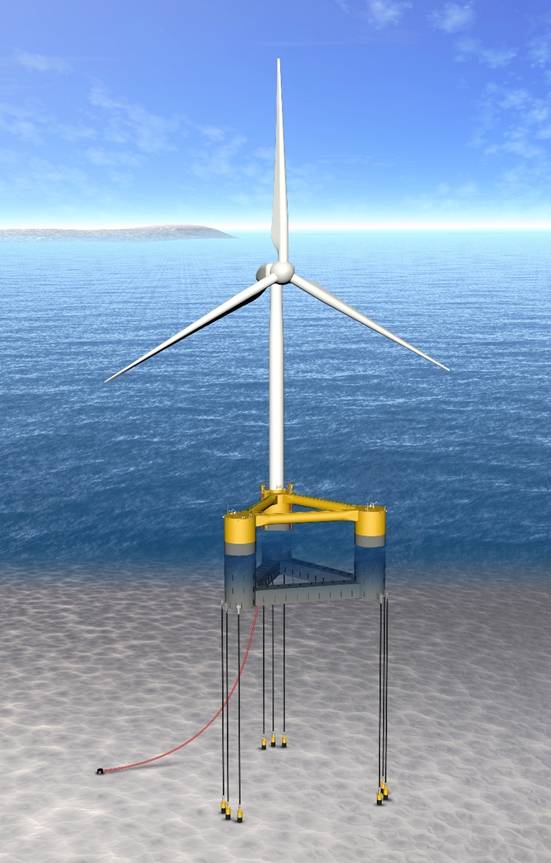
Japanese companies JERA, MODEC, Toyo Construction, and Furukawa Electric have received a notice of acceptance of their joint grant application, under the Green Innovation Fund program of NEDO, to conduct a project to develop cost-reducing technology for tension leg platform (“TLP”) floating offshore wind turbines.
NEDO (New Energy and Industrial Technology Development Organization) is Japan's national research and development agency that creates innovation by promoting technological development necessary for the realization of a sustainable society.
To achieve carbon neutrality by 2050, the Japanese government has set a goal of increasing offshore wind power generation capacity, including floating offshore wind, to 30–45 GW by 2040. Because Japan has limited shallow-water sites where the bottom-fixed offshore wind turbines now being developed around the world can be installed, there is a strong domestic demand for practical floating offshore wind turbines that can be installed in deep water further from shore.
According to JERA, TLP systems are expected to reduce the cost of power generation because the high stability of tension mooring to a seafloor foundation enables installation of large 15 MW-class wind turbines, which have the potential to become mainstream in the future, on compact floating platforms.
In addition, JERA said, TLP mooring lines are expected to be more socially acceptable than other mooring systems because they can reduce the space occupied under the sea by 1/1,000 approximately (in case of 100m water depth, as example) and have less impact on existing businesses such as the fishing industry and ship operations.
The joint project's goal is to establish component technologies for TLP floating and mooring systems and subsea power transmission systems with the aim of commercializing floating wind farms in the early 2030s.
The four companies plan to jointly conduct component technology development for about two years.
JERA will conduct surveys and measurement of the planned verification site, design power generation facilities, and establish environmental parameters. In addition to conducting simulations and demonstrations of component technologies previously studied by each company—floating and mooring systems by MODEC, mooring foundations by Toyo Construction, and power transmission systems by Furukawa Electric—a basic plan for a 15 MW-class power generation demonstration facility will be drawn up based on design and environmental parameters provided by JERA.
The four companies will also begin considering supply chains for mass production and cost reduction with the aim of realizing commercial projects following the power generation demonstration.